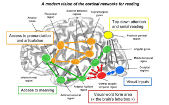The Value of Family Engagement

Family engagement plays a vital role in children's education for improved literacy and academic outcomes. It distinguishes between parental involvement in school events versus active participation in their children's learning process. Stressing the importance of parental time investment, it discusses the impact of parental activities on a child's perception of importance in learning. With only a third of children proficient in reading, parental involvement is crucial. Family Learning Software, designed for joint use by parents and children, fosters literacy skills and strengthens parent-child relationships. The software offers shared goal-setting, interactive learning, and valuable feedback, enhancing parental confidence and aiding children's progress. Notably, limited screen time with quality content positively impacts children's learning and development.
Family engagement is the apple pie of children’s education: everybody is for it, but not many people experience it every day. If they did, it would light up their children’s lives, and their own. It would deepen family relationships, deepen children’s commitment to learning, increase adult’s interest in improving their own literacy, and increase children’s academic outcomes.
Unfortunately, family engagement in children’s education is often confused with parental engagement in their children’s education programs. Parents are invited to back-to-school night to meet their children’s teachers, they may be given access to their children’s gradebook, they are encouraged to communicate with their children’s teachers, but they are not given a clear role in their children’s learning.

Family engagement in education requires direct parental (grandparent, aunt, uncle, adult friend, etc.) involvement in the learning process itself. Children are extremely sensitive to where their parents spend their time. If Mom invites her daughter or son to play catch or kick a soccer ball, then that sport rises in importance for her child. If Dad invites his son or daughter to play cards, then card shuffling and math skills rise in importance for his child. So, when it comes time to learn to read, should parents put their children in front of the TV to watch Sesame Street while they prepare dinner? Sure, if they need an electronic babysitter, but they shouldn’t expect the experience to engage children in reading.
Learning to read is one of the hardest things that children ever do. In fact, only 1/3 of school children ever becomes proficient in reading (NAEP 2019). Unlike walking and talking, the brain is not pre-wired for reading. Areas of the brain optimized for other purposes have to be repurposed and connected through direct instruction and practice. While 10-20% of children do not need much instruction or structured practice, over 80% do, especially the 2/3 who are not becoming proficient today.

That’s where parental engagement can have the biggest impact: in providing motivational support for the instruction, and direct involvement in the practice that children need to master their reading and writing skills. It takes years to learn to read and write properly. Most children simply do not have the self-motivation to stick with the task in the face of attractive alternatives like TV and video games. When parents get involved, children follow. Some of this support is easy and obvious. Parents can and should read to their children as often as possible, and then ask their children to read to them once they are able. Much of it, unfortunately, is not. Approximately 75% of children behind in reading have functionally-illiterate parents. These parents need tools to help them help their children. Tools to help their children get an early start toward reading proficiency, since reading performance in early grades is among the strongest predictors of long-term reading success. There is a new category of tools to help parents help their children – Family Learning Software. This software is explicitly designed to bring children together with their parents for learning. Key features to look for include:
- joint logins,
- shared goal setting,
- context-sensitive parent advice, opportunities for children to make supervised decisions about their learning pathways,
appropriate learning tasks for both children and adults addressing the same skills, - plenty of time to discuss learning tasks, and
- lots of formative feedback to children and their parents about their progress.
These elements provide scaffolding to build:
- improved parent-child relationships,
- learner agency,
- better oral communications skills, and perhaps most important,
- data-based decision-making skills, the top skills highlighted—along with reading and writing—by employers seeking qualified employees.
The same elements provide substantial benefits for parents:
- improved confidence in their parenting,
- information about their children’s progress against benchmarks,
- language to share their perspectives with their children’s teachers, and
- specific behaviors like open-ended question asking to help their children learn.
Parent participation in the use of family learning software is particularly important during the childhood years. Not only do children see the importance that their parents place on learning to read and write. Most young children are simply not ready to manage interactive learning software on their own. While they may be able to watch a video or play a simple game, engaging in an interactive learning experience requires their parent’s (grandparent’s …) involvement. However, the time commitment need not be burdensome. Family learning software can be effective in sessions of as little as five to ten minutes at a time. Furthermore, once children have used a given learning activity a few times with a parent, they will learn to use it on their own. Then, parents can encourage their child to try out new activities with their help as needed. Finally, it is vitally important to distinguish between the shared use of family learning software and the excessive screen time that many young children experience. Psychologists at the Harvard Family Research Project (Harvard Family Research Project, Research Spotlight: Families and Digital Media in Young Children's Learning, February 2014.) found that the emerging research tell us that,
- Effective uses of technology and media are active, hands-on, engaging, and empowering for children;
- Carefully monitored screen time experience with quality content can benefit young children, but excessive screen time harms healthy growth and development, regardless of content;
- Young children may benefit from computer use if appropriate software is selected;
- Children can learn through joint media engagement with parents, grandparents, siblings, and peers;
- Parents are more likely to consider the educational benefits of technology for their children than to consider the downsides.
